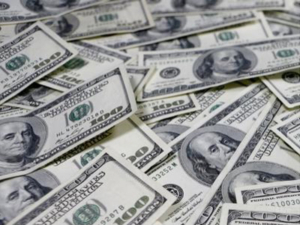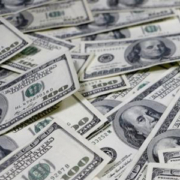Apples-to-Apples, the Gender Pay Gap Exists
 This week we hit “Equal Pay Day” on Tuesday, a day which symbolizes the extra days women must work to make the same salary as her male peers did last year.
This week we hit “Equal Pay Day” on Tuesday, a day which symbolizes the extra days women must work to make the same salary as her male peers did last year.
According to the Demystifying The Gender Pay Gap survey by Glassdoor, the biggest myth about the gender pay gap is that it doesn’t exist at all, as 7 in 10 employees across seven countries assumed men and women received the same pay for the same work. But even when narrowed down to an apples-to-apples comparison within companies, researchers found a significant gender gap exists.
The Apples-to-Oranges Gap
Every time the gender pay gap comes up, it seems we have the apples-to-oranges data and the apples-to-apples data. Apples-to-oranges data compares men’s earnings to women’s earnings without breaking down the factors at play.
The recent Catalyst data summary of Women’s Earnings And Income reports that in the U.S. in 2014, women earned 79% as much as men in annual earnings. Based on Census data of median weekly earnings in 2015, full-time working women earned 81% as much as men, but only 72% as much within full-time management, professional, and related occupations.
Data has shown that female income tends to level off around age 35-40, as gendered workplace penalties reach full swing, while male income doesn’t level until 50-55 years old. The American Association of University Women reports that “women are typically paid about 90 percent of what men are paid until around the age of 35, at which point median earnings for women start to grow much more slowly than median earnings for men. From around age 35 through retirement, women are typically paid 75 to 80 percent of what men are paid.”
This difference has a significant impact on women’s lives, resulting in an average of $10,800 less in annual earnings, or nearly a half million dollars across a career, and a dramatically lower retirement security (44% less median income) for longer-living women, which ultimately spells an economy issue.
The Apples-to-Apples Gap
In their recent survey, Glassdoor created apples-to-apples salary comparisons by factoring in “differences in education, experience, age, location, job title, industry and even company.”
In the U.S, they found an apples-to-oranges 24% pay gap, or that women earned 76% as much as men. When they controlled for age, education, and years of experience, the gap was 19%.
When they looked at the same job title at the same employer at the same location, the highly “adjusted”apples-to-apples gap was still 5.4% – women earned 94.6 cents on the dollar of her male peer sitting next to her.
For a full-time working woman at median earnings, that’s a $2,140 loss per year. But for a woman who earns $100,000 a year, the loss is $5,400 annually.
The “adjusted gap”also increased with age – 6.2% at 35-44 years old, 9.5% at 45-54 years old, and 10.5% at 55-64 years old.
Among industries, the “adjusted”pay gap for insurance was among the biggest at 7.2% and finance was 6.4%. Among occupations, C-Suite professionals had one of the largest gender pay gaps (27.7%).
Apples-to-Oranges Is Still a Gender Bias Issue
Gender bias is still a significant driver of an apples and oranges comparison – it’s a big factor of the context that makes the difference exist at all.
According to Robert Hohman, CEO of Glassdoor, “occupational sorting”explains 54% of the overall “unadjusted”pay gap – the sorting of men and women into different industries and different roles in the economy, through non-subtle and subtle societal influences.
Education and experience were minor factors of explanation (14%). In fact, an April Gender Pay Inequality report from the U.S. Congress Joint Economic Committee stated, “The typical woman with a graduate degree earns $5,000 less than the typical man with a bachelor’s degree,”and that “women’s median earnings are lower at every level of education.”
Sincerity Is Transparency
The gender pay gap has been stagnant for the last decade 2006 to 2015 (change was 20 times faster in the preceding decade) and is not except to close until 2059.
Recent executive proposals by President Obama to target the gender pay gap by having the Equal Employment Opportunity Commission collect companies salary data has prompted reactions of government overreach, but the overall intention is to get targeted with a persistent problem.
As long as the persistent gender gap belongs to everyone, it belongs to nobody, and that’s why transparency matters. 70% of employees feel salary transparency is good for employee satisfaction and for business.
Certainly, a pointed finger sparks transparency, especially if it’s being pointed publicly or by shareholders, and especially if there’s nothing to hide. With the recent Glassdoor finding that female computer programmers experience one of the highest “adjusted”occupation pay gaps at 28.3%, the big names in Tech have been coming out to champion their equal pay.
On Monday, both Facebook and Microsoft announced publicly that men and women earn equally at their companies. Amazon and Apple have publicly stated similar findings based on employee pay surveys, prompted by shareholder proposals requesting disclosure of pay equity assessments, filed or co-filed by Pax World. Intel also shared their equal pay findings recently.
Now what if companies began to feel the same external pressure to disclose their C-Suite pay findings around that whopping 27.7% discrepancy?
When it comes to the gender pay gap, it seems the only real language of sincerity is indeed transparency, and companies have the chance now to use it.
By Aimee Hansen









